preserving bukchon
hanok village
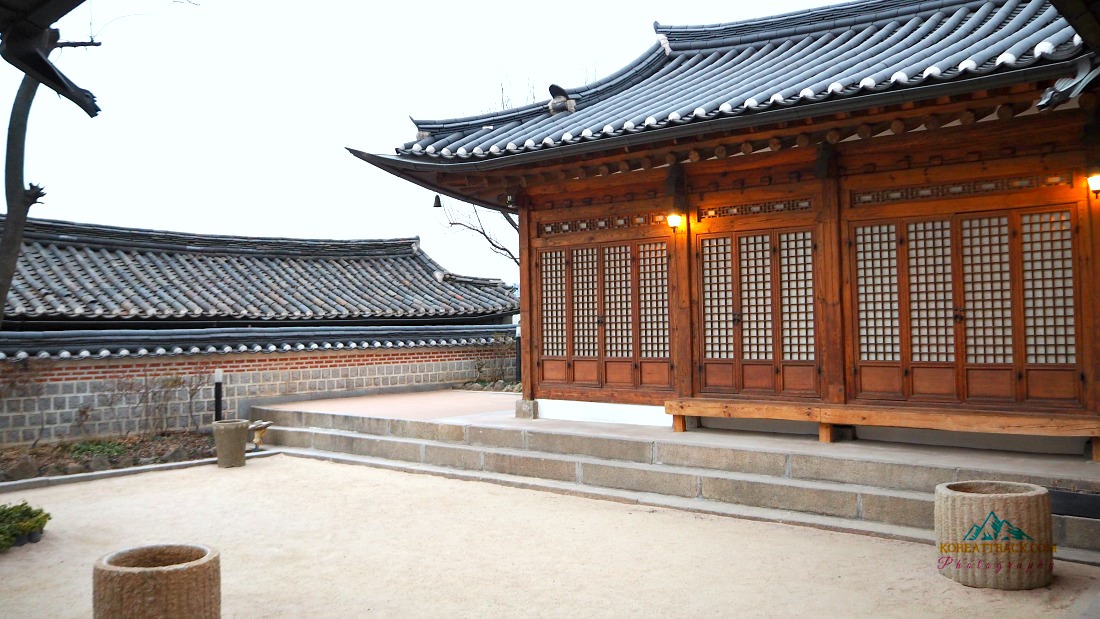 One of the houses with the traditional space in the middle of the houses
One of the houses with the traditional space in the middle of the housesbukchon hanok village
Bukchon Hanok Village is a popular tourist destination located at the heart of Seoul, South Korea.
The area is designated to preserve the local and traditional Korean way of life. Although it basically serves to introduce to guests the tradition, it is no longer how most Koreans live.
Bukchon Hanok Village is a walking distance from Anguk Station in Seoul. It is a busy area with a various array of shops—cafés, restaurants, art studios and shops, realty offices, among others.
I want to introduce this place with the aim of telling you that there are some exciting things you can do here.
This area is a famous site for Instagramers. One among many reasons is that the village captures the watchers’ hearts of Korean soap opera of the Joseon Dynasty.
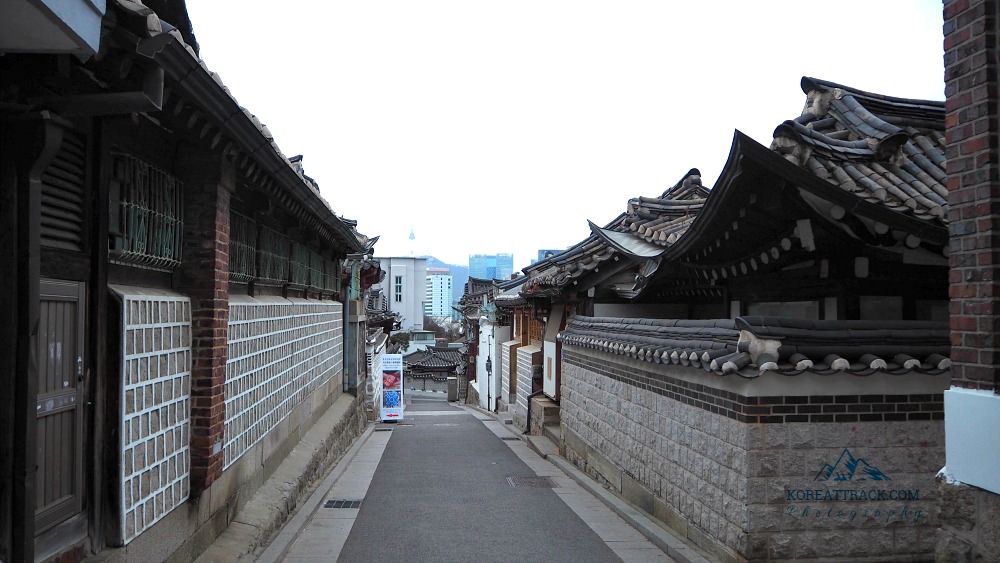 View of the footpath in-between the village homes
View of the footpath in-between the village homesAs your bird’s eye view, here are the things you can enjoy at Bukchon Hanok Village…
- Traditional Korean House Experience
- Traditional Korean Dress or Clothing
- Artisan Displays
- Cultural Crafts Workshop
- Traditional Korean Art
- Souvenirs Shopping
- Café – Tea, Coffee, Shakes, Ades
- Food
- Hanok Homestay
- Other Interesting Sites
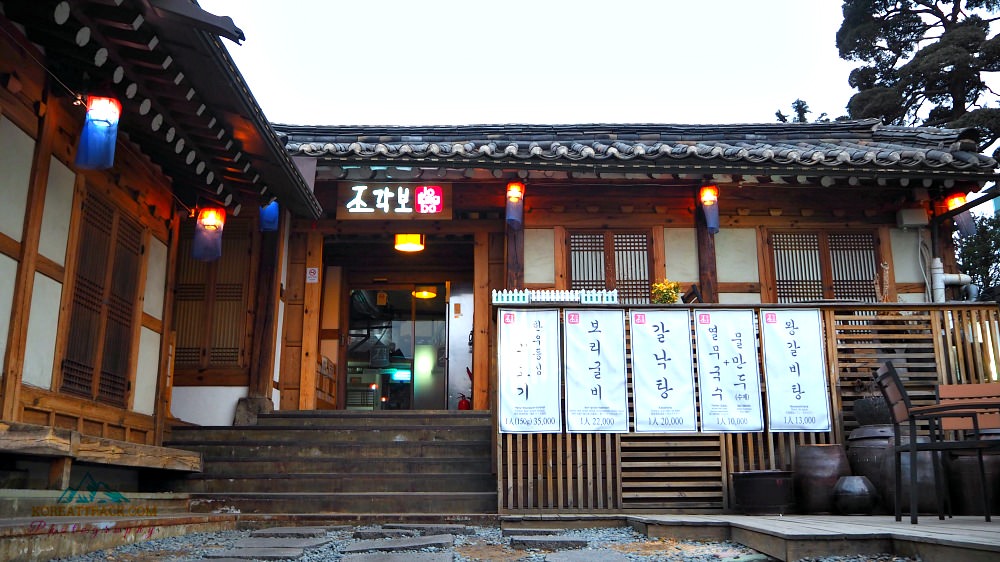 A Korean restaurant along the pathway to Hanok Village
A Korean restaurant along the pathway to Hanok VillageTraditional Korean House Experience
The ‘hanok’ is the traditional Korean house build with environmental and natural resources available in their surroundings. For example, they used mud and hay to build the walls, and soil, mud, hay, lumber, wood sticks, among others to build the sturdy roof.
The hanok has low roofing to keep the temperature changes low. During summer time, it is cooler but not very cold either during winter time.
To keep the residents warm during the winter season, Koreans heat the floor (called ‘ondol’) by building a steady fire under the floor.
Where they build a fire for heating, they also cook food, heat water or boil potatoes.
Nowadays, Koreans heat the floor (and the whole house or room), not by fire but mostly by water (or oil) that runs through the pipes laid out beneath the floor.
So, when you visit this village, you will notice exhaust on the sides of each house and a place where they build a fire—most often, there is a huge cauldron on it.
Traditional Korean Dress or Clothing
The second and quite interesting to see here is the traditional Korean ‘hanbok’s (clothing). Both the men and women’s clothes have vibrant and striking colors.
Of course, the best ones are worn during special holidays and events (such as Chuseok, Lunar New Year, etc.).
Normally, during their daily chores, the Koreans in the past simply wear the less colorful clothes except the kings and queens and the royal family members.
The clothes were mostly made of silk…
So, when at Bukchon Hanok Village, you can try wearing one of these traditional clothing. Now, feel like a royal complete with hanbok and headgear. Once you do it, it could mean you have completed your visit!
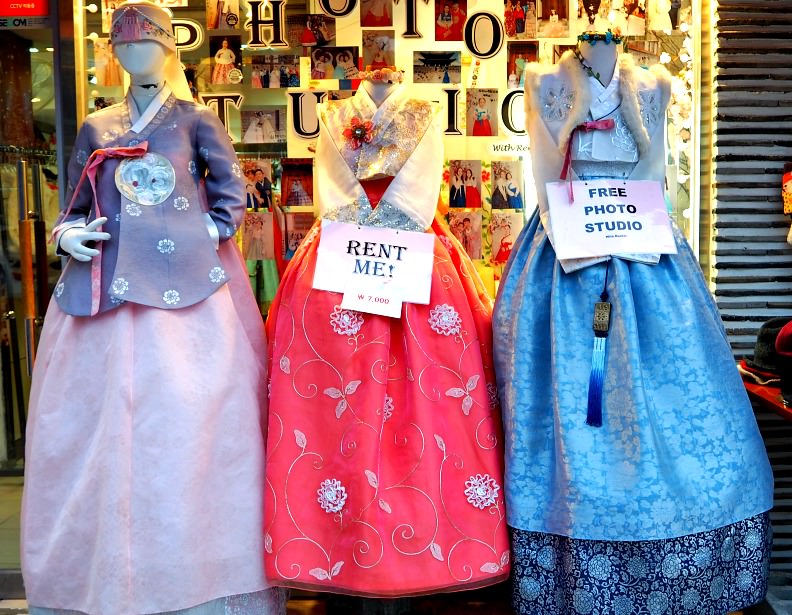 Traditional Korean Clothes ('Hanbok') for women
Traditional Korean Clothes ('Hanbok') for womenKorean traditional clothes (or 'hanbok') are becoming increasingly popular for special occasions, such as weddings and holidays. Hanbok consists of a jeogori (a shirt or a jacket) and chima (skirt). The traditional colors are bold, deep colors like red and blue, but modern hanbok often have lighter shades of these colors as well.
Both men and women can wear hanbok, and there are unique variations for each gender. The jeogori for women has long flowing sleeves, while the jeogori worn by men is shorter and usually without any adornment.
In addition to traditional colors, modern hanbok often feature lighter shades of color such as pastels or patterns with animals or nature. Accessories such as hats, scarves and jewelry are used to complete the look.
Hanbok can be worn for formal occasions or just to experience Korean culture. In either case, it is important to know how to take care of hanbok so that it looks its best.
Proper storage and cleaning methods should be followed in order to preserve the colors and fabric.
Knowing how to wear hanbok correctly is also important. The jeogori should fit snugly around the body, but not so tight as to be uncomfortable. The chima should be worn so that it covers the ankles and feet when standing, but it can still be adjusted for a more casual look.
The colors of the hanbok should be complementary and match the occasion. Hanbok is a traditional Korean garment that has been around for centuries, and it’s important to respect its history when wearing one. Learning how to wear and take care of hanbok will allow you to enjoy this beautiful clothing for years to come. Have a great day!
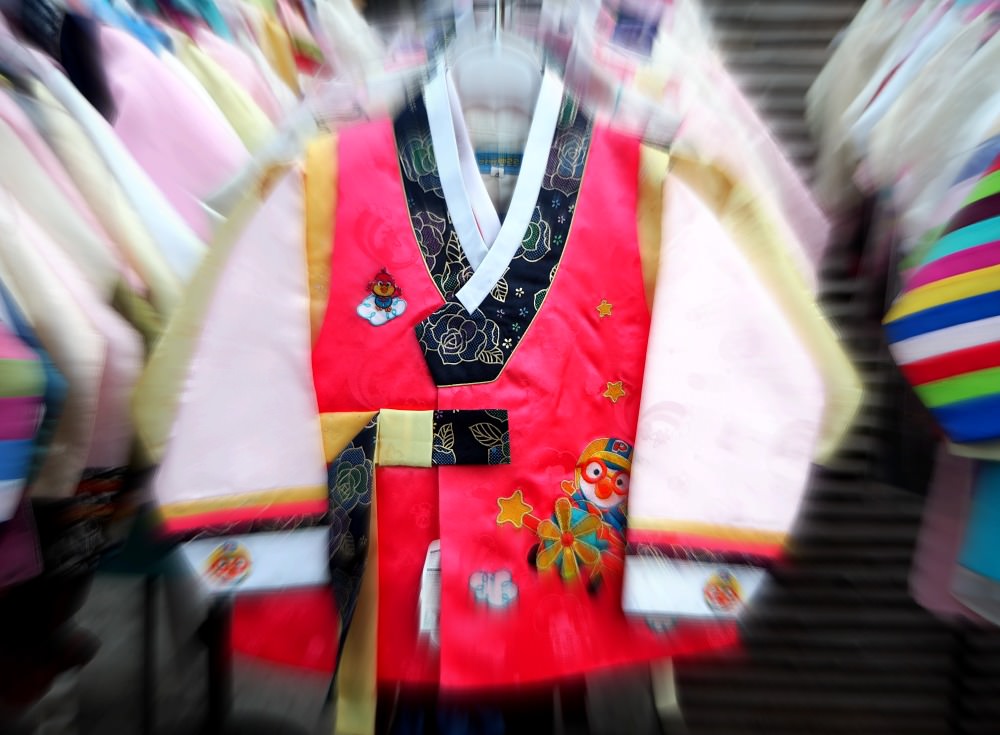 Hanbok for children
Hanbok for childrenArtisan Displays
Other striking items you will discover at this village are the displays of artistic works of artisans. Although things have changed from creating traditional to modern technological products, you will still appreciate their craftsmanship.
You will see colorful textiles with various designs and the weaving machines around. You will also find hand-crafted jewelry and pottery, made with local materials. Moreover, you can taste the traditional recipes cooked in clay pots over wood fires.
Traditional paintings of birds and animals, handicrafts and furniture are strikingly pleasing to your eyes. This village is a place where you can get lost in the beauty of traditional art and culture.
The people here are very friendly, hospitable, and welcoming. They will make sure that your experience at this village is unforgettable. You will be filled with joy and admiration for what these people have accomplished through their works of art, tradition, and culture.
So, if you are looking for a place to just relax and appreciate the beauty of traditional art and culture, this village is the perfect destination for you. Enjoy!
Cultural Crafts Workshop
To learn the craft of the Korean’s past craftsmanship, you have the opportunity to register in advance and learn the trade at Bukchon Hanok Village. If willing, you will learn the intricacies and secrets in creating such wonderful items by engaging in hands-on activities.
If you are reading this in English, then you can join. That because they can only teach through a limited medium: English, Korean, Chinese, and Japanese languages.
Go for it!
 A traditional Korean shop selling souvenirs
A traditional Korean shop selling souvenirsSouvenirs Shopping
After exploring the traditional houses, you can purchase souvenirs at the shops that sell miscellaneous products. They are located adjacent to the village—they are quite attractive and tempting your senses to buy some.
You can purchase socks with thematic designs (such as flags, Winnie the Pooh, Mickey Mouse, Minie Mouse, etc). Keychains, scarves, and other fancy souvenirs for friends or families are available with fair rates.
Please, note that you can get these not inside the village but just nearby and surrounding the area.
Café – Tea, Coffee, Shakes, Ades
Any time of the year is great for any visitor at the village. After your exploration, you can take time to try the local drinks, or simply sip in your favorite hot choco or cappuccino at the cafés located nearby the Bukchon Village.
Hot or cold (iced) drinks are available. Of course, real juices or natural herbal and diet drinks are readily available if you ask for it.
After your beverage, you may also want to experience traditional Korean food. There are plenty of restaurants nearby the village to choose from. Sample some delicious tteokbokki or kimchee stew- all offered at reasonable prices.
And if you’re looking for something more on the sweet side, try out one of the many traditional Korean desserts like sujeonggwa (cinnamon punch), or hodugwaja (red bean pastry). The options are limitless.
So, come and explore Bukchon Village today! Whether it’s a hot beverage after you meander through the village streets or just a snack while you take in the sights, Bukchon has something for everyone.
Don’t forget to take some souvenirs home with you! From the traditional Korean paper fans to small ceramic cups and dishes- there is something for every budget in this unique village. All of these items are made from local artisans who have been perfecting their craft for generations. So don’t miss out on a chance to take home a piece of Korea with you!
Come and explore Bukchon Hanok Village today!
Food (Spicy?), Anyone?
Certainly, you will never starve after your traditional culture experience at the village. There are many restaurants waiting for your curious taste buds. Maybe, you should decide first which food you wish to try and look for it.
You can ask them to make it less spicy (or hot) if you want. To complete your traditional experience, there is nothing more conventional or cultural than eating local food. You can even go to a restaurant and order the dish that you have learned earlier.
After enjoying your meal, don't forget to go around the village and explore some more. Get your camera ready for this part of your journey and take lots of pictures that will be worth remembering.
If you need help navigating around, do not hesitate in asking the locals. It is likely that they will help you find your way and even show you some places you may not have heard of before.
In conclusion, visiting a local village can be an unforgettable experience for everyone. There's so much to learn about their culture, food, and customs.
 A Korean Restaurant
A Korean RestaurantHanok Homestay
Now, if you want to complete your traditional Korean experience at Bukchon Hanok Village fully, you have an opportunity to stay for a night or a couple of days. (See one place below).
The rates could not be more than you pay for a regular hotel. What you will get in a homestay is the service, cultural aspects, and hospitality of your hosts.
Resources for your visit
GAHOE 2nd Flor Observatory
This observatory located on a hill provides viewers some nice panorama of the area and Seoul’s environment. They offer drinks for free as you pay the entrance fee.
Entrance Fee: 3,000 Won
Free Menu: Coffee, Tea, Cocoa, Juice, Ice Cream, Sandwich
Digeut House
Just right behind the Gahoe Observatory, you can also inquire about this house. The property offers: Hanok Stay, Performances & Events (traditional Korean activities)
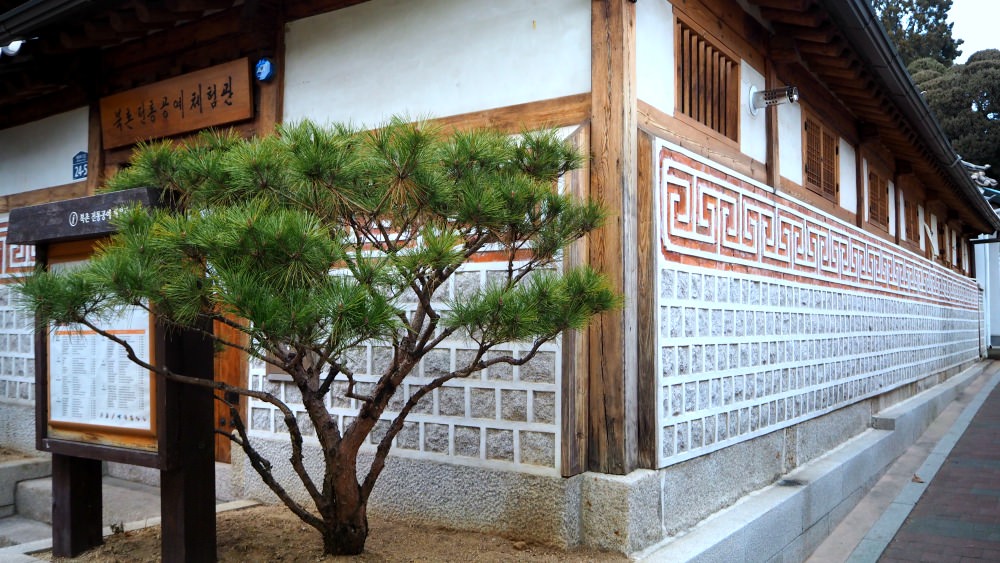 Korean crafts learning center at Bukchon Hanok Village
Korean crafts learning center at Bukchon Hanok VillageHanbok For Sale (at a store before the village)
Kids – 20,000 KRW (US$20)
Adult – 30,000 KRW (US$30)
Donglim Knot Workshop
Donglim Knot Workshop is a space producing, exhibiting, and educating various ornaments, wall mounts, and accessories suitable for contemporary costumes along with Traditional Knot.
Bukchon Traditional Crafts Experience Center
The center provides opportunities to learn traditional Korean crafts. The center has an experience room, display room, and an education room. They offer different arts each day during the week.
Admission: Free
Experience Fee: from 6,000—19,000 KRW (depending on the craft)
Sample crafts: handkerchief dyeing, Tal (ornamental wooden masks), fabric ornament, ring-knot bracelet, silver gilded glass pendant, fabric mobile, gilded bookmark, hair ribbon, etc.
Phone: 02-741-2148
Kum Bak Yeon (Since 1856)
Workshops are being held by Kim Gi-ho and Park Soo-young of the National Intangible Cultural Heritage on Guembakjang—Gold Leaf Imprinting.
Website: www.kumbakyeon.com
email: kumbakyeon@daum.net
Phone: +82-2-730-2067
Other Sites To Explore
- Gahoedong Catholic Church of the Seoul Archdiocese
- Bukchon Arts Culture Museum
- Seoul Education Museum
- Jeongdok Public Library
- Baek In-Je House Museum
Thanks for reading this. Enjoy your traditional Korean experience soon!
Get Exciting Activities
Book one of our exciting activities today to experience the thrill of a lifetime! Take advantage of this opportunity and secure your spot in advance.
Hotel Map Guide
Find your affordable, accessible, and comfortable hotel in Seoul at Agoda.Com. See the hotel map below...
Hotel Booking Guide
Find affordable and amazing hotels on Agoda.com using the search box below. Book now to enjoy great discounts and save!
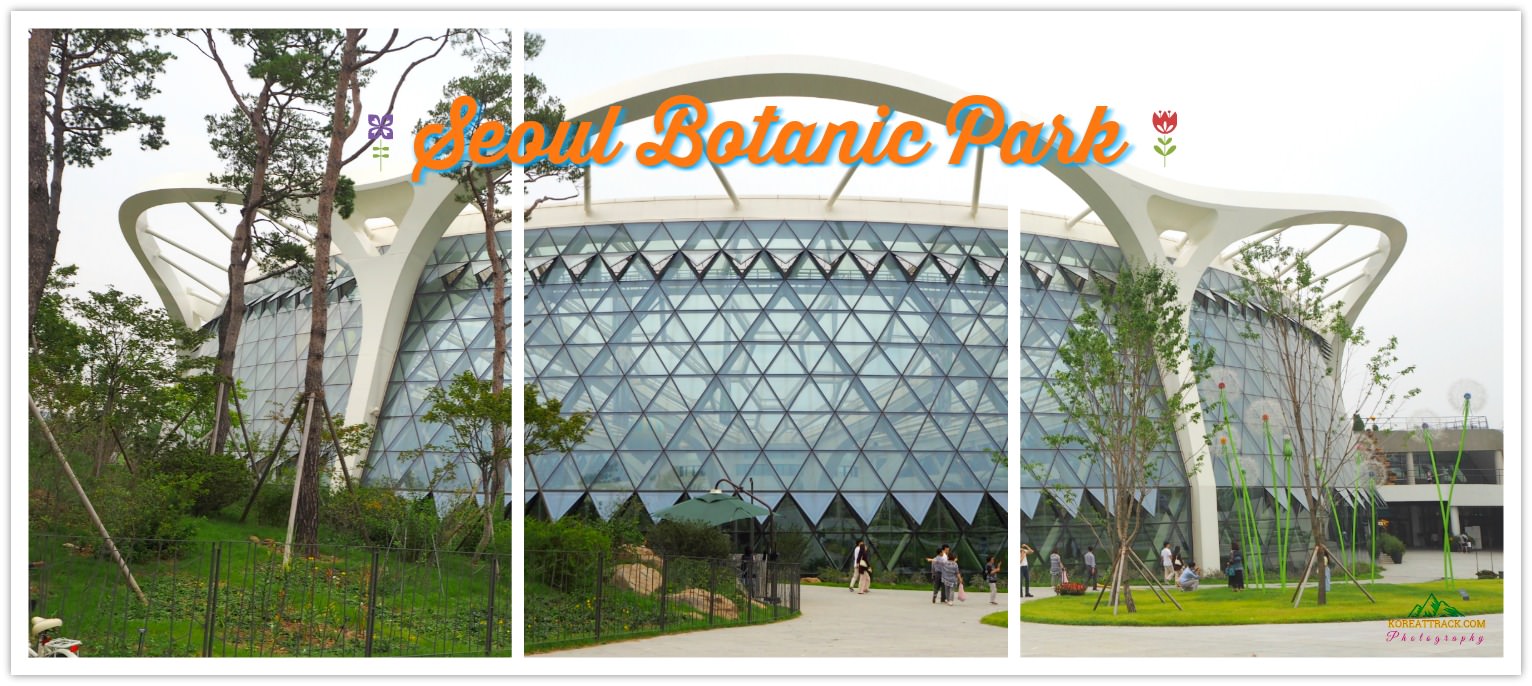
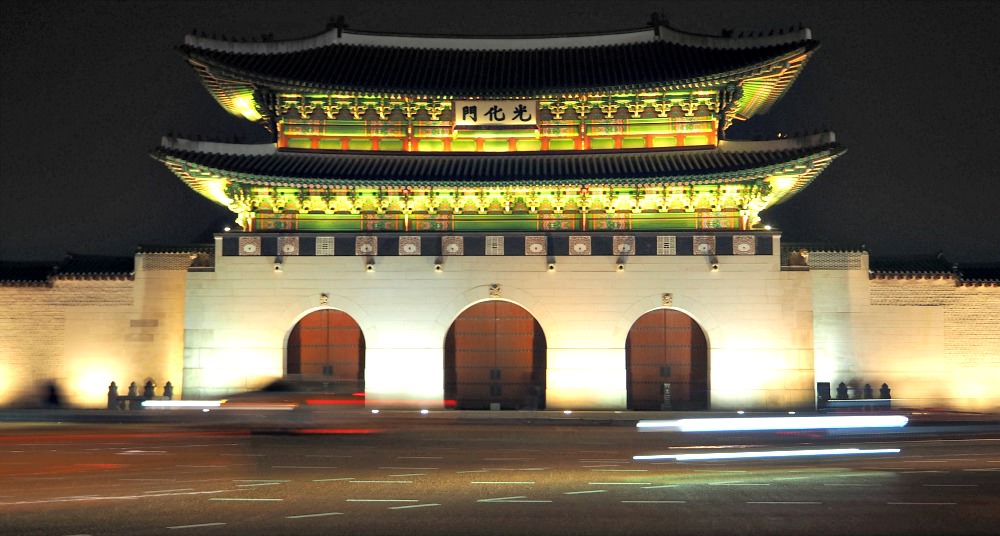

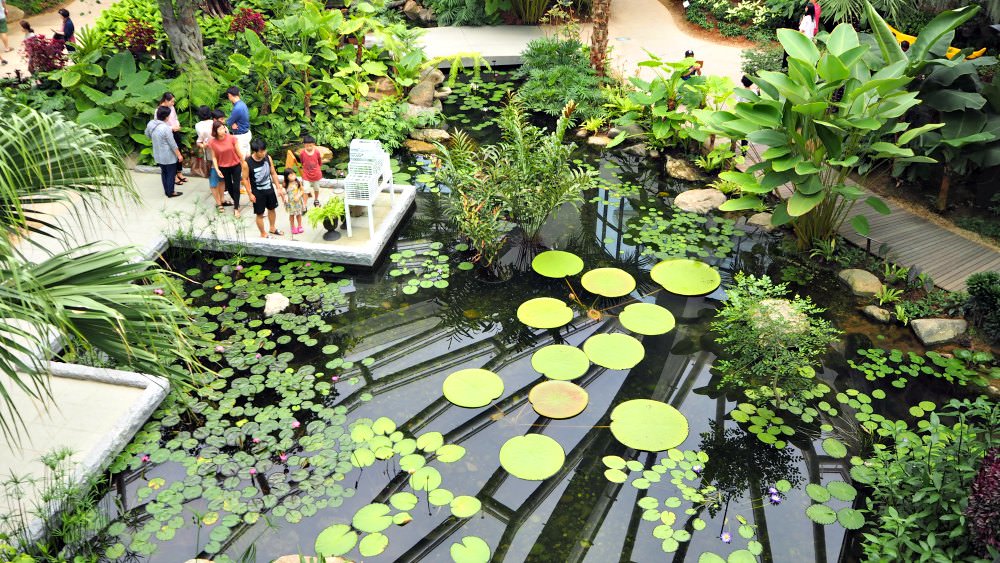




New! Comments
What do you think about this page? Leave me a comment in the box below.